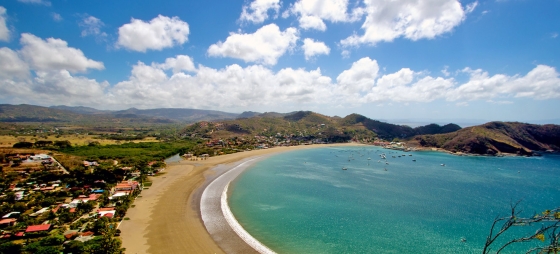Puerto Cabezas Rainfall & Precipitation: Monthly Averages and Year-Round Insights
This page shows the average amount of rainfall per month in Puerto Cabezas. The numbers are calculated over a 30-year period to provide a reliable average. Now, let’s explore all the details to give you a full picture.
Puerto Cabezas has a notably wet climate with abundant precipitation, recording 2279 mm of rainfall per year.
Monthly Precipitation Levels
The average number of days each month with precipitation (> 0.2 mm)
Puerto Cabezas can be quite wet during October, receiving approximately 307 mm of precipitation over 24 rainy days.
In contrast March, experiences much drier conditions, with 52 mm of rainfall, spread across 10 rainy days.October, the wettest month, has a maximum daytime temperature of 30°C. During the driest month March you can expect a temperature of 29°C. For more detailed insights into the city’s temperatures, visit our Puerto Cabezas Temperature page.
Annual Precipitation in Nicaragua
The map below shows the annual precipitation across Nicaragua. You can also select the different months in case you are interested in a specific month.
 heavy rainfall
heavy rainfall
 high
high
 moderate
moderate
 low
low
 almost none
almost none
Amsterdam Precipitation Compared World Wide
Puerto Cabezas’s average annual precipitation is 2279 mm. Let’s compare this to some popular worldwide tourist destinations:
The climate in San Francisco, USA, is influenced by coastal weather, with 469 mm of rainfall mostly during the winter months.
In Seoul, South Korea, the average annual precipitation is 1237 mm, with most rain falling during the summer monsoon season.
Adelaide, Australia, enjoys 511 mm of annual precipitation, with dry summers and wet winters.
Bangkok, Thailand, experiences a tropical monsoon climate with 1668 mm of annual rainfall, with the heaviest precipitation occurring during September and October.
How is Precipitation Measured?
Precipitation amounts are measured using specific gauges installed at weather stations, collecting both rain and snow and any other type of precipitation. Rainfall is measured directly in millimeters, while that from snow and ice is obtained by melting it. Automated systems often incorporate heaters to make this easier.
Information from these stations is transmitted via Wi-Fi, satellite, GPS, or telephone connections to central monitoring networks. This information is immediately updated and integrated into weather models and forecasts.
Sea vs. Land Precipitation
The proximity of a location to a large body of water can significantly affect its rainfall patterns:
- Ocean Influence: Coastal regions typically receive more rainfall due to the presence of moisture-laden winds from the ocean. These regions tend to have more humid climates and experience more frequent precipitation, especially in winter.
- Continental Climates: Areas further from the sea, such as inland or continental regions, experience less frequent rainfall and more extreme seasonal variations in precipitation.
For more detailed information about Puerto Cabezas’s weather, including sunshine hours, humidity levels, and temperature data, visit our Puerto Cabezas Climate page.
Current rainfall in Puerto Cabezas


















